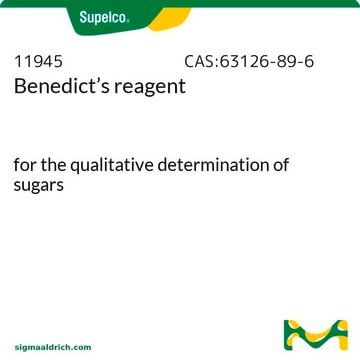17937
25-Hydroxyvitamin D2
≥95.0% (HPLC)
Synonym(s):
25-Hydroxycalciferol, 25-Hydroxyergocalciferol, Ercalcidiol
About This Item
Recommended Products
biological source
synthetic
assay
≥95.0% (HPLC)
form
crystalline powder
color
white to off-white
mp
88.0-95.0 °C
storage temp.
−70°C
SMILES string
[H][C@@]12CC[C@H]([C@H](C)\C=C\[C@H](C)C(C)(C)O)[C@@]1(C)CCC/C2=C\C=C3\C[C@@H](O)CCC3=C
InChI
1S/C28H44O2/c1-19-10-14-24(29)18-23(19)13-12-22-8-7-17-28(6)25(15-16-26(22)28)20(2)9-11-21(3)27(4,5)30/h9,11-13,20-21,24-26,29-30H,1,7-8,10,14-18H2,2-6H3/b11-9+,22-12+,23-13-/t20-,21+,24+,25-,26+,28-/m1/s1
InChI key
KJKIIUAXZGLUND-ICCVIKJNSA-N
Biochem/physiol Actions
Packaging
Related product
signalword
Danger
hcodes
Hazard Classifications
Acute Tox. 2 Inhalation - Acute Tox. 3 Dermal - Acute Tox. 3 Oral - STOT RE 1 Oral
Storage Class
6.1A - Combustible acute toxic Cat. 1 and 2 / very toxic hazardous materials
wgk_germany
WGK 3
flash_point_f
Not applicable
flash_point_c
Not applicable
ppe
Eyeshields, Faceshields, Gloves, type P3 (EN 143) respirator cartridges
Certificates of Analysis (COA)
Search for Certificates of Analysis (COA) by entering the products Lot/Batch Number. Lot and Batch Numbers can be found on a product’s label following the words ‘Lot’ or ‘Batch’.
Already Own This Product?
Find documentation for the products that you have recently purchased in the Document Library.
Customers Also Viewed
Our team of scientists has experience in all areas of research including Life Science, Material Science, Chemical Synthesis, Chromatography, Analytical and many others.
Contact Technical Service












